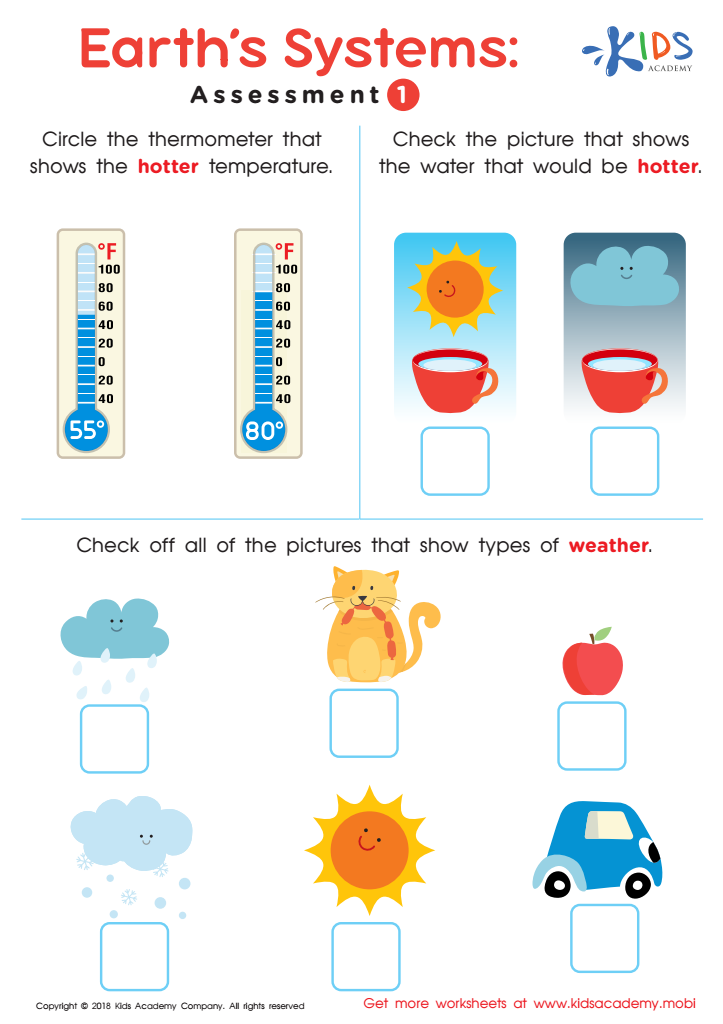Weather worksheets activities
1 filtered results
-
From - To


Earth's Systems: Assessment 1
Weather worksheets activities are an essential resource for educators aiming to introduce and deepen students' understanding of meteorological phenomena. These activities are designed to engage learners of all ages, from young children who are just beginning to notice changes in the weather to older students exploring more complex concepts such as climate change and atmospheric conditions. Here are several reasons why these activities are incredibly useful in the educational sphere:
Interactive Learning: Weather worksheets activities offer interactive learning opportunities. Instead of passively absorbing information, students actively participate in their education by completing tasks, solving puzzles, and answering questions related to weather patterns, tools used in meteorology, and the effects of weather on the environment.
Enhances Observation Skills: By engaging with weather worksheets, students are encouraged to observe their surroundings more closely. They learn to notice changes in the weather, understand the reasons behind these changes, and predict future weather conditions. This not only heightens their observation skills but also fosters a deeper connection with the natural world.
Cross-Disciplinary Learning: Weather touches on several disciplines, including science, geography, and even mathematics. Worksheets on weather allow students to explore these subjects in an integrated manner, understanding how they interconnect in the real world. This holistic approach to learning enriches students' educational experience and prepares them for more complex interdisciplinary studies.
Builds Critical Thinking: Weather worksheets often present scenarios that require problem-solving and critical thinking. Activities may include analyzing data, comparing and contrasting different weather conditions, or considering the impact of weather on ecosystems and human activities. This nurtures students' ability to think critically and solve real-world problems.
Customizable for Different Learning Levels: One of the great advantages of weather worksheets activities is their adaptability. They can be tailored to suit the learning level of each student, ensuring that everyone, from beginners to more advanced learners, finds the activities both challenging and rewarding.
In conclusion, weather worksheets activities are invaluable in the educational journey of students. They not only make learning about weather engaging and interactive but also promote critical thinking, enhance observation skills, and encourage a multidisciplinary approach to education. These activities prepare students not just to understand the world around them but also to actively participate in its care and conservation.
 Assign to the classroom
Assign to the classroom












